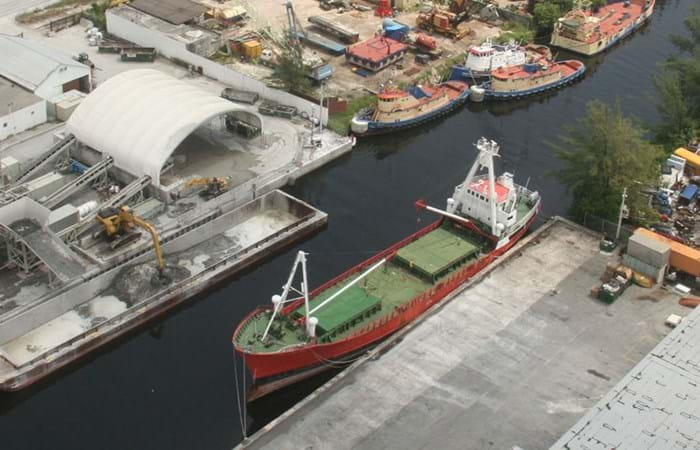The Miami River, which flows through an urban industrial area of Miami, Florida, had not been dredged since the area was built in 1934. In 1990 the US Army Corps of Engineers advised the city that the sediment had to be removed from the river as it was impeding shipping. There was one caveat however: the sediment, contaminated with heavy metals, pesticides and oil, could not be placed in the ocean.
In 2004 a consortium of Weston Solutions and Bean Environmental was awarded the job of restoring the river to its original depth. The two companies were jointly responsible for the dredging, transportation and processing of around 540,000 m3 of contaminated sediment. Boskalis Dolman was consulted on the project at an early stage and was subsequently commissioned as subcontractor to Bean Environmental to erect a transshipment and processing plant for the dredged sediments. A Mobile Soil Washing Plant (MSWP) was flown in and assembled on the banks of the Miami River. This MSWP combines coarse fraction separation and mechanical dewatering. Coarse fraction separation involves the precise separation of the various sub-flows using a rotating wash and sieve drum, shaker screens and hydrocyclones. Mechanical dewatering is used to process the remainder of the contaminated sludge. As a result of this processing by the MSWP, a large proportion of the resulting sub-flows could be beneficially used in the community at little extra cost to the project. In addition, we were able to significantly reduce the original volume of contaminated dredged sediments, which had a direct effect on cost-efficiency.
